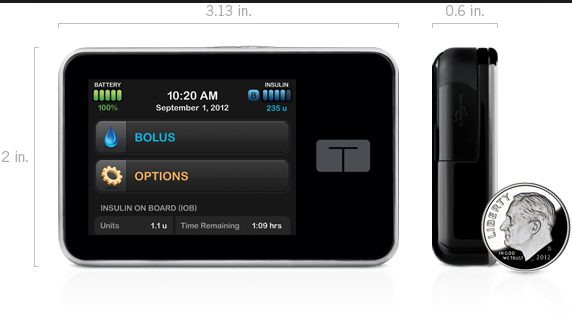
The CGM iPro sensor I wore for five days (see post below) came off Monday morning in a hurricane. Not exactly what you think, but I like the drama. My walk from the subway station to the hospital to see my CDE was in a rainstorm at high gale winds we rarely see here in New York – umbrellas discarded on the streets, puddles knee-high. Were it not for the fact that my iPro site was itching like mad for two nights from the sticky tape over it I’m not sure I would have braved the storm at all.
By the time I arrived at the hospital the entire front of my jeans was soaked so that I was wringing water out of the cuffs. I was eternally grateful that not only did I brave the storm, but that my CDE did as well. Moments later the CGM came off, a lot more easily than it went in thank goodness, and we downloaded the results. Luckily the battery lasted for as long as I wore it, just over five days. That’s not always the case, but it was here. Hallelujah!
Then we stared at pages of graphs, charts and numbers of my blood sugar numbers as picked up by the sensor every five minutes and I got to see my patterns throughout the day, and night.
Since I was doing finger sticks at least four times a day along with wearing the sensor, my daytime numbers were not surprising, and, my daytime numbers are typically understandable to me. When I’m a little high it’s usually because I didn’t calculate the carbs in a meal or snack correctly. When I’m a little low it’s usually for the same reason, or my powerwalk lowered me slightly more than I expected. Being insulin-sensitive, as many type 1s are, a half unit of my rapid-acting insulin has an impact.
During this five day period I also went high after a birthday lunch for my mom who turned 80 – a poor calculation on the calamari and spring rolls! But mom, you’re worth it. And I discovered just as routine is my savior, so is my experience. Since I was logging my numbers, I used the carb counts on packages more than usual and that led me more astray than the educated guesses I typically make based on years of testing. Perhaps it’s because food manufacturers are allowed a 20% margin on the carb counts listed on their packages, so beware.
But what I really wanted to know from this experiment is what my numbers do overnight, and that was the reveal. Around midnight they start sliding downward hour after hour. Around 5 AM they are at their lowest, in the high 50’s/low 60’s, and then they begin to gradually come up between 5:30 and 6:30 AM and then rise more swiftly. If I wake up and test my blood sugar around 6:30 AM the number’s usually around 75 or 80, a half hour later they’re 90 or 100. A half hour after that they’re climbing over 100. This is without doing anything or eating anything.
“This is perfectly normal,” said my CDE and nothing to worry about. In the morning your liver is pumping out glucose-raising hormones to get you ready for the day (dawn phenomenon). Even if you’re a little over 100 before you take your injection, it’s fine.” O.K., I’m relieved about that since my boundaries are admittedly narrow.
“Can I prevent the overnight slide or morning rise?,” I asked. “Not really, this is your body and you’re doing fine. The only thing that might reduce the overnight low is cutting back on your Lantus one unit, but I don’t think you need to do that. You don’t go that low at 5 AM and then you come back up. “Would a pump level this out?,” I asked. “Yes, and that’s when most of my patients change to a pump, when multiple injections just can’t do more for them.”
So what I know is I’m working the MDI (multiple daily injections) system as best I can. I keep my blood sugar between 120 and 140 before I go to sleep, on the higher end of that range if I’ve had wine with dinner since that creates a slightly greater drop overnight. Then I blunt the morning rise with one unit of my rapid-acting insulin as soon as I wake up and take the rest of my breakfast dose just before or during my morning meal.
My concern that I drop so low overnight, like to 30 or 40 mg/dl, that my liver shoots out glucagon to save me from dying turned out to be false. That is a relief. Also, while I don’t log my numbers ordinarily, I’m already obsessive enough, if you log your numbers – and for most people this is an invaluable exercise – make sure you also note what you eat and any exercise. Most log books don’t give you space for this. So log your numbers on a simple sheet of paper. A bunch of numbers without these references is an incomplete picture.
I highly recommend if you have access to wearing a trial CGM for a few days to see your pattern that you do so. This kind of information can lead to an important change or modification in your treatment plan. I know I’ll be sleeping better from now on.
Note: Our bodies are different. Don’t base any of your own treatment decisions on my results. Check with your health care provider to be safe.









